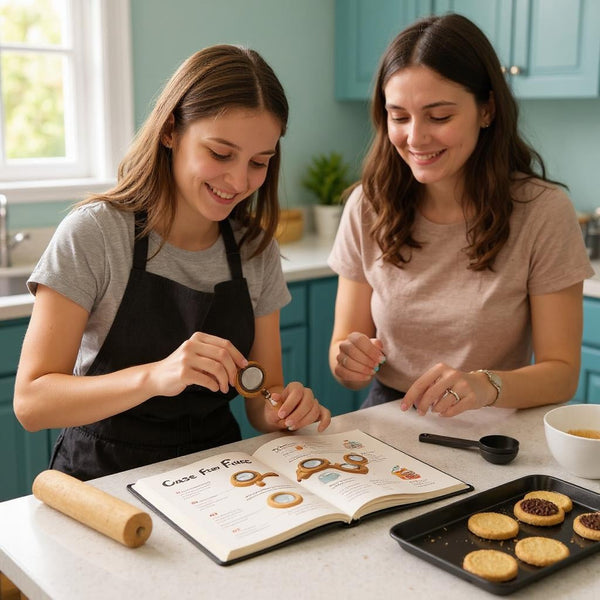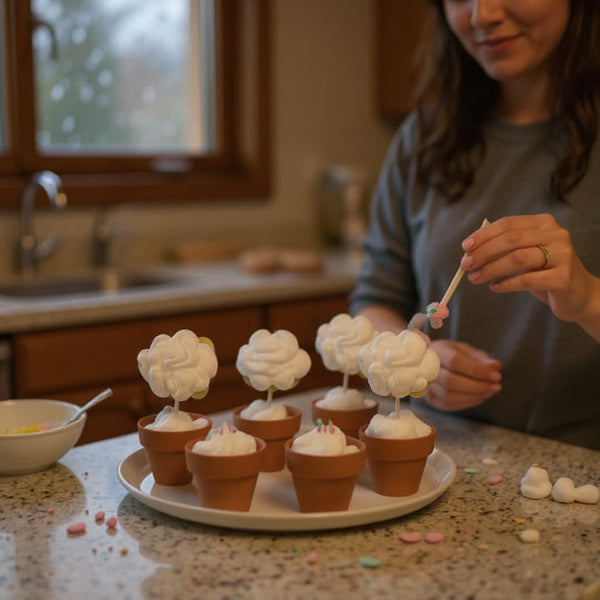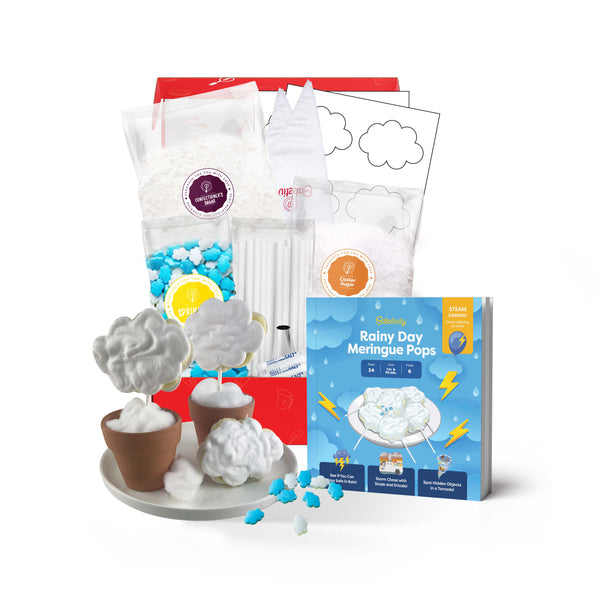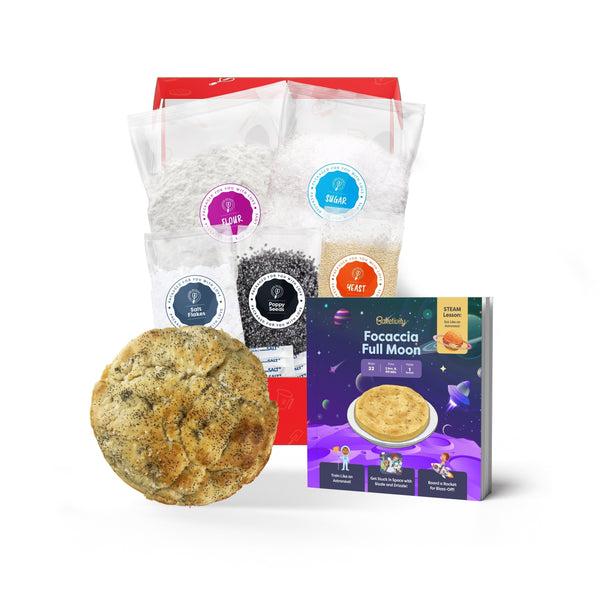Understanding the Science Behind Baking
Before we dive into the experiments, let's take a moment to understand the science behind baking. Baking is a fascinating and intricate process that goes beyond just mixing ingredients and popping them in the oven. It involves the delicate dance of various components interacting with heat, leading to the miraculous transformation of raw dough or batter into a delectable treat that tantalizes our taste buds. By delving into the depths of the science behind baking, we can unravel the mysteries that unfold in our ovens and gain a deeper appreciation for the artistry of this culinary craft. One of the key aspects of baking is the precise balance of ingredients, each playing a crucial role in the final outcome of the baked goods. Flour provides the structural foundation, giving baked goods their shape and texture. Sugar not only adds sweetness but also aids in browning through caramelization, creating that irresistible golden crust. Eggs act as a binding agent, holding everything together while also adding moisture to ensure a moist and tender crumb. Butter brings richness and flavor, elevating the taste profile of the baked treats. And let's not forget about the leavening agents, such as yeast, baking soda, or baking powder, which are responsible for that airy and light texture that we associate with well-baked goods.The Role of Ingredients in Baking
Flour, sugar, eggs, butter, and leavening agents like yeast, baking soda, or baking powder are the main players in baking. Each ingredient has a specific purpose. Flour provides structure, sugar adds sweetness and helps with browning, eggs act as a binder and add moisture, butter contributes to the richness of the baked goods, and leavening agents help the dough or batter rise.The Chemistry of Baking
Chemical reactions drive baking. When heat is applied, the proteins in flour undergo denaturation and coagulation, resulting in the solidification of the structure. The heat also causes the starches in flour to absorb water, swell, and gelatinize, giving baked goods their soft texture. But it's the combination of leavening agents, such as yeast, baking soda, or baking powder, that truly brings the magic to baking. These agents produce carbon dioxide gas, which gets trapped in the dough or batter, causing it to rise and become light and fluffy.Experiment 1: The Rising Power of Yeast
Now, let's delve deeper into the fascinating world of yeast and its incredible ability to make bread dough rise. This tiny but mighty living organism plays a crucial role in the process of fermentation, transforming simple ingredients into a fluffy and delicious loaf of bread. Get ready to witness the wonders of science in action! Yeast, a type of fungus, feeds on the sugars present in the dough and produces carbon dioxide gas as a byproduct. This gas gets trapped in the dough, causing it to expand and rise. The result is a light and airy texture in the finished bread that we all know and love.Materials Needed
To conduct this experiment and unlock the secrets of yeast, you'll need the following materials:- 2 cups of flour
- 1 teaspoon of sugar
- 1 teaspoon of salt
- 1 packet of active dry yeast
- 1 cup of warm water
Procedure and Observations
1. In a mixing bowl, combine the flour, sugar, and salt, creating the foundation for your bread dough. This mixture will provide the yeast with the necessary nutrients to thrive and work its magic. 2. In a separate bowl, activate the yeast by dissolving it in warm water. The ideal temperature for the water is around 110°F (43°C), as water that is too hot can kill the yeast. Allow the yeast to bloom and activate for about 5 minutes, forming a frothy layer on the surface. 3. Gently incorporate the yeast mixture into the dry ingredients, forming a sticky dough. Knead the dough for a few minutes until it becomes smooth and elastic, a sign that the gluten strands are developing and the dough is ready to rise. 4. Transfer the dough to a greased bowl, cover it with a clean cloth, and place it in a warm, draft-free area to proof. During this time, the yeast will continue to ferment, producing more carbon dioxide and causing the dough to double in size. 5. Witness the transformation as the dough rises and becomes puffy and airy. This visual confirmation of yeast's power highlights the biological processes at work in baking. 6. Once the dough has proofed, gently punch it down to release any excess gas and shape it into a loaf. Preheat your oven to 180°C (350°F) and bake the bread for approximately 30 minutes, or until it is golden brown and sounds hollow when tapped on the bottom. 7. Allow the bread to cool slightly before slicing into it and savoring the fruits of your labor. The aroma of freshly baked bread and the satisfaction of creating something delicious from scratch make this experiment a truly rewarding experience.Experiment 2: The Effect of Baking Soda and Baking Powder
Next, let's explore the magical world of baking soda and baking powder. These leavening agents play a crucial role in making your cakes and muffins light and fluffy.Materials Needed
To conduct this experiment, you'll need:- 1 cup of flour
- 1 teaspoon of baking powder
- 1/2 teaspoon of baking soda
- 1/2 cup of sugar
- 1/2 cup of milk
- 1/4 cup of vegetable oil
- 1 egg
Procedure and Observations
1. Preheat your oven to 180°C (350°F) and grease a baking pan. 2. In a bowl, mix the flour, baking powder, baking soda, and sugar together. 3. In a separate bowl, whisk the milk, vegetable oil, and egg. 4. Combine the wet and dry ingredients, stirring until just combined. 5. Observe how the batter starts to rise and bubble, indicating the release of carbon dioxide gas. 6. Pour the batter into the greased pan and bake for 25-30 minutes. 7. Marvel at the soft and fluffy texture of your baked treat!Experiment 3: The Science of Gluten Formation
Now, let's delve into the science behind gluten formation. Gluten gives bread its elasticity and structure, and with this experiment, you'll witness the power of gluten in action.Materials Needed
To conduct this experiment, you'll need:- 2 cups of flour
- 1 teaspoon of salt
- 1 cup of warm water
Procedure and Observations
1. In a bowl, mix the flour and salt together. 2. Slowly add warm water to the mixture, stirring until a sticky dough forms. 3. Knead the dough vigorously for a few minutes. 4. Observe how the dough becomes stretchy and elastic as the gluten develops. 5. Let the dough rest for an hour, allowing the gluten to relax. 6. Shape the dough into rolls or a loaf, and bake at 200°C (400°F) for 20-25 minutes. 7. Enjoy your gluten-filled masterpiece!Experiment 4: The Maillard Reaction in Baking
Lastly, let's explore the fascinating Maillard reaction. This chemical reaction is responsible for the appealing flavors, aromas, and beautiful golden-brown color of baked goods.Materials Needed
To conduct this experiment, you'll need:- 1 cup of sugar
- 1/2 cup of butter
- 1/2 cup of flour
- 1/2 teaspoon of vanilla extract
Procedure and Observations
1. Preheat your oven to 180°C (350°F) and line a baking sheet with parchment paper. 2. In a saucepan, melt the butter over low heat. 3. Add the sugar, flour, and vanilla extract, stirring until well combined. 4. Drop spoonfuls of the dough onto the prepared baking sheet. 5. Observe how the cookies spread and develop a beautiful golden-brown color as the Maillard reaction occurs. 6. Bake for 10-12 minutes until the edges turn golden brown. 7. Let the cookies cool before indulging in their delightful flavors! These five fun science experiments with baking are just a glimpse into the captivating world of baking chemistry. So next time you step into the kitchen, remember that you're not just baking, you're conducting a scientific experiment. Enjoy the process and let your taste buds be the judge of your delicious creations!Join the Baketivity Baking Club
Ready to take your kitchen experiments to the next level? Join the Baketivity Baking Club and discover the joy of baking with our all-inclusive kits. Embrace the art and science of baking as you create lasting memories with your loved ones. With Baketivity, you'll receive the finest ingredients, creative recipes, and educational materials that make baking a piece of cake. Whether you're a beginner or a seasoned baker, our community is here to support and inspire you every step of the way. Join the Baking Club today and start your delicious adventure!




